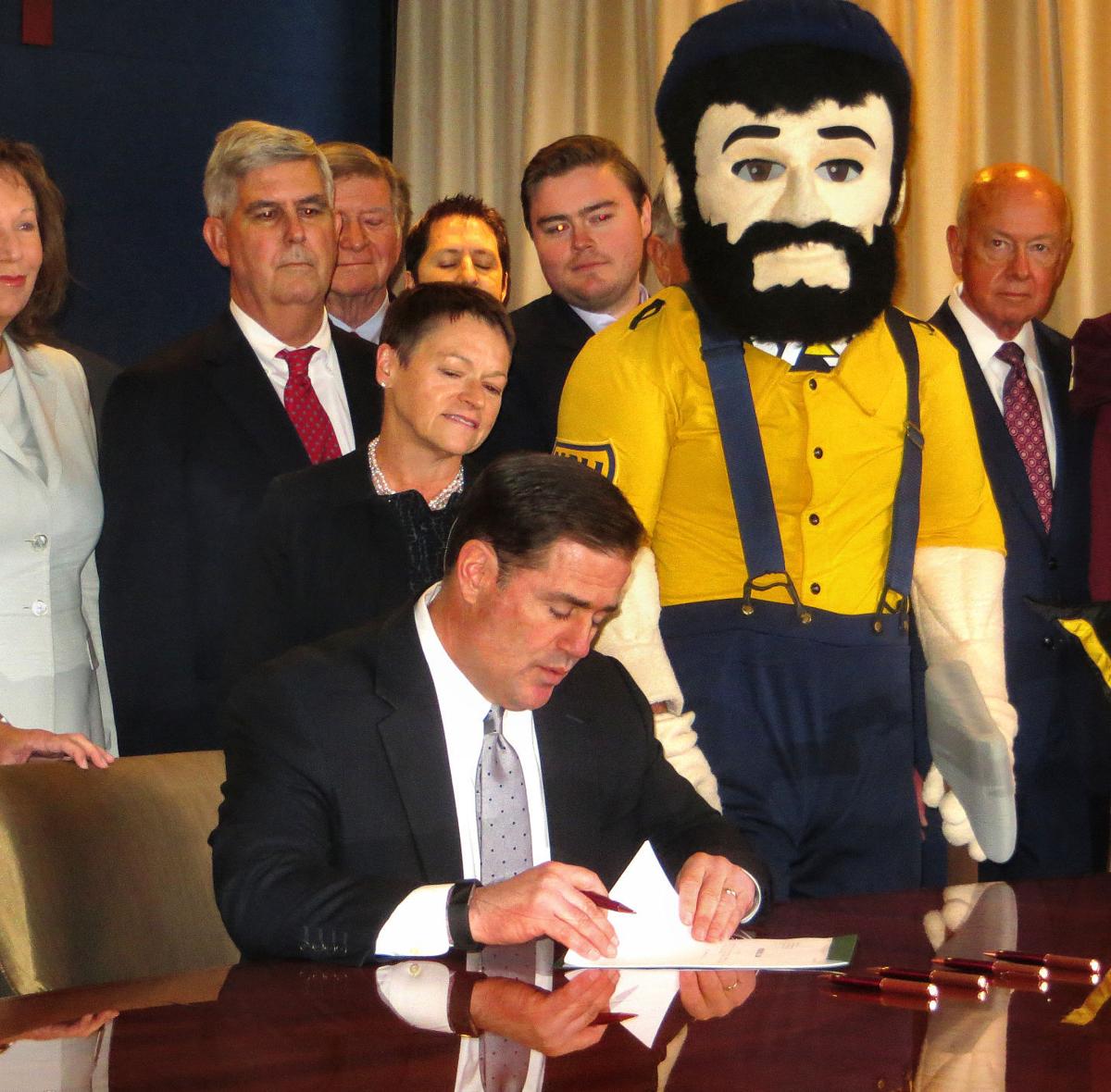Gov. Doug Ducey signed legislation Monday to let the state’s three universities borrow $1 billion for repairs and new buildings — but with nothing to directly relieve the increasing burden of tuition.
But a regent and the president of one of the schools said they believe help is on the way — eventually.
The new law comes as university officials said the failure of the state to adequately fund the system had led to situations where buildings are in serious disrepair. So bad did the situation get that regents President Eileen Klein publicly reminded lawmakers earlier this month when they were preparing the budget of their constitutional obligation to raise the funds to “insure the proper maintenance of all state educational institutions” and to “provide for their development and improvement.” And one legal option for that, she said, is through the courts.
What Ducey signed Monday is designed to keep it from coming to that.
The deal involves Ducey and legislative leaders promising to provide $27 million in the 2017-2018 school year for the first of 25 repayments on the bond; future allocations will increase by 2 percent a year until the debt is paid off.
But the $9.8 billion state spending plan for the coming year includes only $15 million in new operating dollars for the schools.
Even that is ephemeral: These are one-time dollars that do not become part of the schools’ operating base. And it actually is $4 million less than the one-time funding provided for the current school year.
This has been part of a trend.
In the 2007-2008 school year, the state put nearly $1.1 billion into the universities. That computed to $9,648 per student.
Current year state funding is $681.5 million, or just $4,098 per student. And that’s not counting the effects of inflation.
Ducey, in signing the borrowing measure on Monday, said that was inevitable.
“The state was in a tremendous shortfall,” he said. “Arizona was hurt more than other states in the country through the recession.”
There’s another way of looking at it.
Arizona State University President Michael Crow said tax dollars now cover less than 40 percent of what it costs to educate an undergraduate Arizona resident. That’s about half of what it was a decade earlier.
The result has been a series of tuition increases.
A decade ago resident tuition at the University of Arizona was $5,037; for the current year the figure for incoming students is $11,769.
The other schools have seen similar changes.
Crow said, though, he’s not counting on state funding ever getting back to the level it was. But he said that’s not necessary as the universities have become more efficient.
“What we need is a guaranteed amount of resources that we can predict our income around for in-state students,” he said.
Crow said the goal is having state aid pick up 50 percent of the cost to educate an Arizona undergraduate.
The price tag for that, however, is about $240 million. Crow said he believes lawmakers can be convinced to make a series of $80 million increases to get to that point — if for no other reason than they recognize the link between higher education and the state’s financial future.
“The economy is shifting so quickly that if we don’t prepare more people for the new economy we’re going to be disadvantaged,” Crow said.
Regent Bill Ridenour acknowledged there really is no new money in the budget for university operations. But he argued that $1 billion infusion of capital actually will help keep tuition costs down.
“The key to the whole big picture is additional income to make up for the decline in state funding,” he said. Ridenour said that means attracting more research dollars.
“In order to be competitive nationally we have to build these buildings to attract these faculty and attract the income necessary to defray the expenses for the students,” he said. And that, said Ridenour, should lower the amount the universities need to get directly from students in tuition.
That, however, still leaves the question of whether future legislatures are willing to pony up the annual payments for the next 25 years or force the schools to use tuition dollars to pay the debt.





